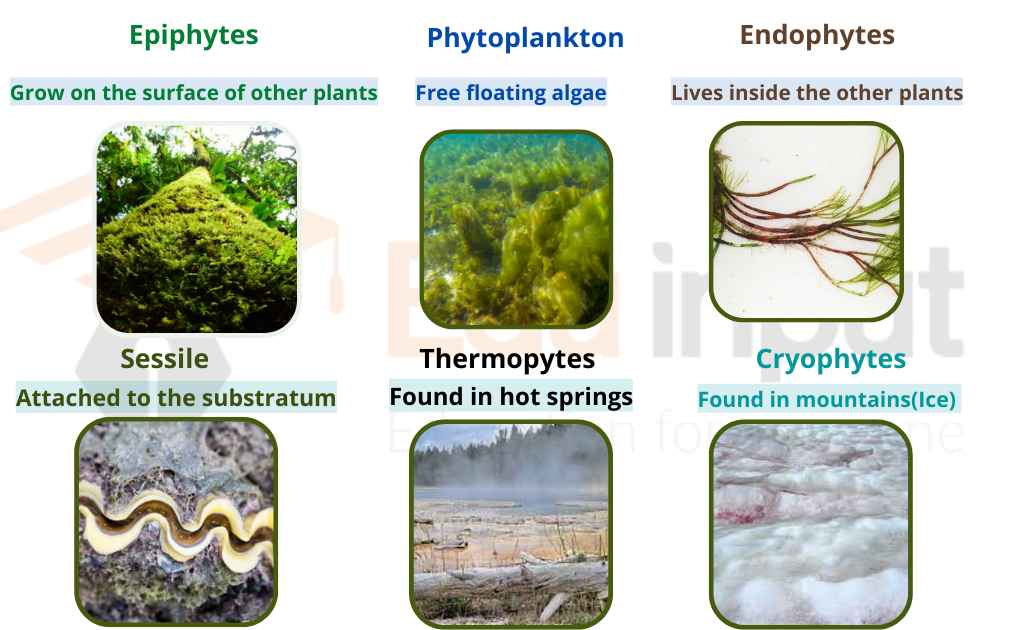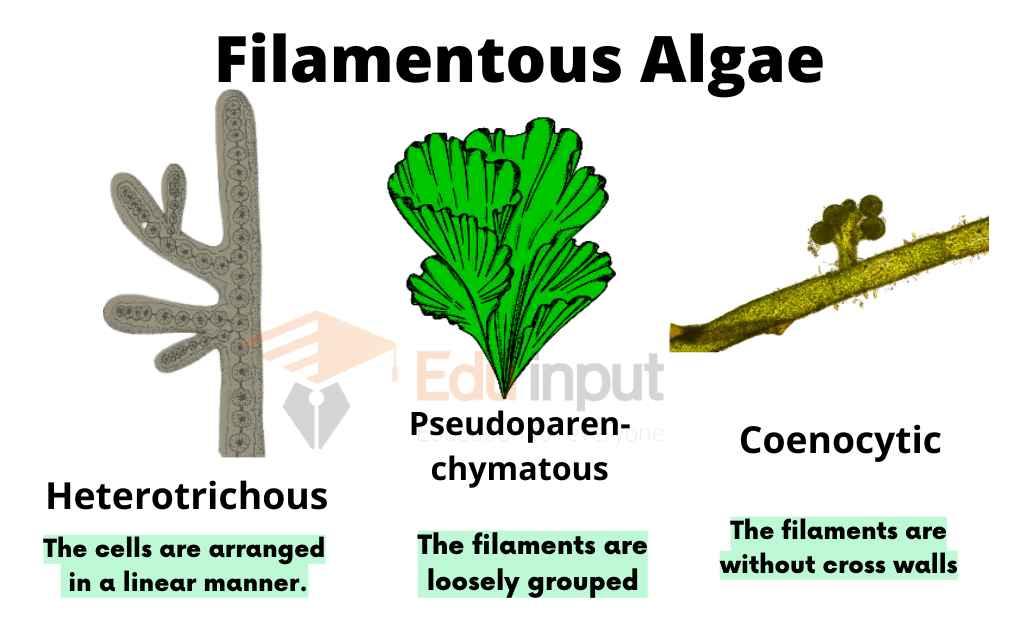Algae-Occurrence, Cell Structure, Pigments, and Reproduction
Algae are a very large and diverse group of eukaryotic organisms. They are ranging from unicellular genera such as Chlorella and diatoms to multicellular like giant kelp. Kelp is a large brown alga.
It may grow up to 50 meters in length. Mostly they are autotrophic. seaweed is the example of the largest and most complex form of algae. The most complex freshwater forms are Charophyta. It is a division of algae that includes Spirogyra and stoneworts. Algae can be microscopic or macroscopic like seaweeds.
Occurrence of Algae
Algae are aquatic plants that live in both freshwater and marine. Freshwater includes ponds, streams, moist rocks, and the bark of trees. Marine forms are present from sea shore to a depth up to 100meter.
Algae may be:
- Epiphytes or Aerophytes (grow on the surface of other plants).
- Endophytes (living inside the other plants).
- Phytoplankton (free-floating algae).
- Sessile (attached to the substratum by holdfast).
- Thermopytes (found in hot springs).
- Cryophytes (found in mountains covered with snow).

Different Structures Of Algae
Algae exist in different forms of structures:
1. Unicellular
Unicellular algae can be motile or nonmotile. The motile form moves through Falegella while the other one can often be found living alone or in groups, within a sticky mucus covering.
2. Colonial Form
Some algae are multicellular, that live in colonial form. They are held together by a sticky substance and can come in different shapes and sizes. Some algae colonies have a set number of cells, while others do not. Such colonies are called coenobia.
3. Filamentous Forms
Cell division in filamentous algae occurs in a single plane, meaning that the cells are arranged linearly. These filaments can be either branched or unbranched. There are three forms of filaments:
Heterotrichous
The filament with the prostate (horizontal) and the vertical system is called heterotrichous.
Pseudoparenchymatous:
Sometimes, filaments are loosely grouped from the pseudoparenchymatous body.
Coenocytic
The filamentous having no cross walls are called coenocytic filaments.

Cell Structure Of Algae
They have eukaryotic cells having the following components:
- Cell wall: The cell is surrounded by a cell wall that is composed of cellulose.
- Cytoplasm: Cytoplasm has membranous organelles. These organelles are
- Plastids
- Mitochondria
- Ribosomes
- Endoplasmic Reticulum
- Contractile vacuole (in motile forms)
- Nucleus
- Some motile forms possess eye spots that are sensitive to light.
Pigments In Algae
Algae are classified into different groups on the basis of the presence of different pigments.
Pigments are present in chloroplasts. Chloroplasts also have pyrenoids. Pyrenoids are used to store reserved food material. Some pigments are:
- • Chlorophyll a, b, c, d
- • Carotene
- • Xanthophyll
- • Fucoxanthin
- • Myxoxanthin
Locomotion of Algae
Most of the unicellular and reproductive cells use flagella for their movement. The number of flagella may vary from two or four. There are two types of flagella:
a) Acronematic (whiplash with smooth surface).
b) Pentonematic (tinsel with fine hairs).
Reproduction in Algae
Algae reproduce through:
- Vegetative reproduction
- Asexual reproduction
- Sexual reproduction
Vegetative Reproduction
The reproduction from body parts is called vegetative reproduction. In algae, It occurs by following Methods;
1. Simple Division Or Fission
It mostly occurs in Chlorophyta.
2. Fragmentation
Its example is spirogyra.
3. Propagules
4. Tubers:
It occurs in chara.
Asexual Reproduction in Algae
Asexual reproduction occurs in favorable conditions.
Different types of spores are produced during asexual reproductions. Spores are produced by the division of protoplast of cells or they are produced inside the sporangium.
Different species produce different types of spores.
- • Zoospores
- • Aplanospores
- • Hypnospores
- • Akinetes
- • Endospores
- • Exospores
- • Monospores
- • Tetraspore
Sexual Reproduction in Algae
Sexual reproduction occurs under unfavorable conditions. It produces a resting stage for passing unfavorable periods. Gametes are produced during sexual reproduction.
There are different forms of sexual reproductions in algae.
1. Isogamy
2. Anisogamy
3. Oogamy
Also Read:
| Difference between Algae and Fungi | Difference Between Bacteria And Algae |
| Difference Between Algae And Bryophytes |

 written by
written by 

Leave a Reply